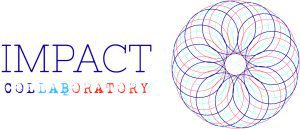Disability Equity Resources- Work In Progress
This is a complex set of topics filled with tensions and intersections. This is by no means an exhaustive list, but here are some resources (both professional and lay public resources) that present further information and differing viewpoints on many topics related to disability equity. Got resources? Add them here or send them to us and we will update the list!
Scent Free Accessibility
- Get mad when people ask you to be scent free? Magazine Article
- Fragrance free workplace accommodations JAN Network Article
- How to be fragrance free Think Again Training & Consulting Network
- Are Scent Free Policies Unjustified? E Senger, 2011
Accessibility and Design
- Iwarsson, S., & Ståhl, A. (2003). Accessibility, usability and universal design—positioning and definition of concepts describing person-environment relationships. Disability and Rehabilitation, 25(2), 57-66.
- Application of Universal Design- Making Presentations and Projects Accessible UW DO-IT Office.
- Aimi Hamraie- Critical Access Studies More about why Universal Design may not be the goal or solution to access for all.
Ableism and Language
- Ableist Language and Alternatives (this also addresses/responds to some of the controversy about this topic as being too PC, policing, and responding too sensitively to an imagined or unintended insult, AND this blog is written by an autistic self-advocate (Lydia’s preferred terms). Autistic Hoya
- Kattari, S. K., Olzman, M., & Hanna, M. D. (2018). “You Look Fine!” Ableist Experiences by People With Invisible Disabilities. Affilia, 33(4), 477-492.
- Wolbring, G. (2008). The politics of ableism. Development, 51(2), 252-258.
- Goodley, D. (2014). Dis/ability studies: Theorising disablism and ableism. Routledge.
Intersectionality
- Blackdisabledandproud.org : A website for college students, created by the HBCU Disability Consortium and the Association on Higher Education And Disability
- Disability Rights WA: Black Lives Matter
- Respect Ability: LGBTQ+ People with Disabilities
- Rooted In Rights: Navigating Healthcare as a Trans Disabled Person
Models of Disability
- Haegele, J. A., & Hodge, S. (2016). Disability discourse: Overview and critiques of the medical and social models. Quest, 68(2), 193-206.
- Kafer, A. (2013). Feminist, queer, crip. Indiana University Press.
Documentaries
- TED Talk- Stella Young “I’m not your inspiration thank you very much”
- FIXED Documentary The Science/Fiction of Human Enhancement
- Crip Camp Documentary
Critiques of Disability Simulations
- Nario-Redmond, M. R., Gospodinov, D., & Cobb, A. (2017). Crip for a day: The unintended negative consequences of disability simulations. Rehabilitation psychology, 62(3), 324.
- VanPuymbrouck, L., Heffron, J. L., Sheth, A. J., & Lee, D. (2017). Experiential Learning: Critical Analysis of Standardized Patient and Disability Simulation. Journal of Occupational Therapy Education, 1(3), 5.
- Valle, J. W., & Connor, D. J. (2019). Rethinking disability: A disability studies approach to inclusive practices. Routledge.
Disability Studies ‘Must’ Reads!
- Clare, E. (2017). Brilliant imperfection: Grappling with cure. Duke University Press.
- Linton, S. (1998). Disability studies/not disability studies. Disability & Society, 13(4), 525-539.
- Goodley, D. (2016). Disability studies: An interdisciplinary introduction. Sage.
- Charlton, J. I. (2000). Nothing about us without us: Disability oppression and empowerment. Univ of California Press.
- Gill, C. J. (1997). Four types of integration in disability identity development. Journal of Vocational Rehabilitation, 9(1), 39-46.
- Kafer, A. (2013). Feminist, queer, crip. Indiana University Press.
- Garland-Thomson, R. (2005). Feminist disability studies. Signs: Journal of women in Culture and Society, 30(2), 1557-1587.
- Davis, L. J. (Ed.). (2006). The disability studies reader. Taylor & Francis.
- Meekosha, H., & Shuttleworth, R. (2009). What’s so ‘critical’about critical disability studies?. Australian Journal of Human Rights, 15(1), 47-75.
- Watson, N., & Vehmas, S. (Eds.). (2019). Routledge handbook of disability studies. Routledge.
- Linton, S. (1998). Claiming disability: Knowledge and identity. NYU Press.
- Hendren, S. (2020). What Can a Body Do?: How We Meet the Built World. Penguin.
References Used in Class:
Please read the following article and view the video and web site prior to class
- Brief history of the disability rights movement (attached) brief-history-of-the-disability-rights-movement.pdf
- Watch this video introducing the concept of ableism.
- Read the content included on this webpage on intersectionality.
- www.cc.com/video/2p86bg/drunk-history-judy-heumann-fights-for-people-with-disabilities
- www.youtube.com/watch?v=dFKicqqVME8
